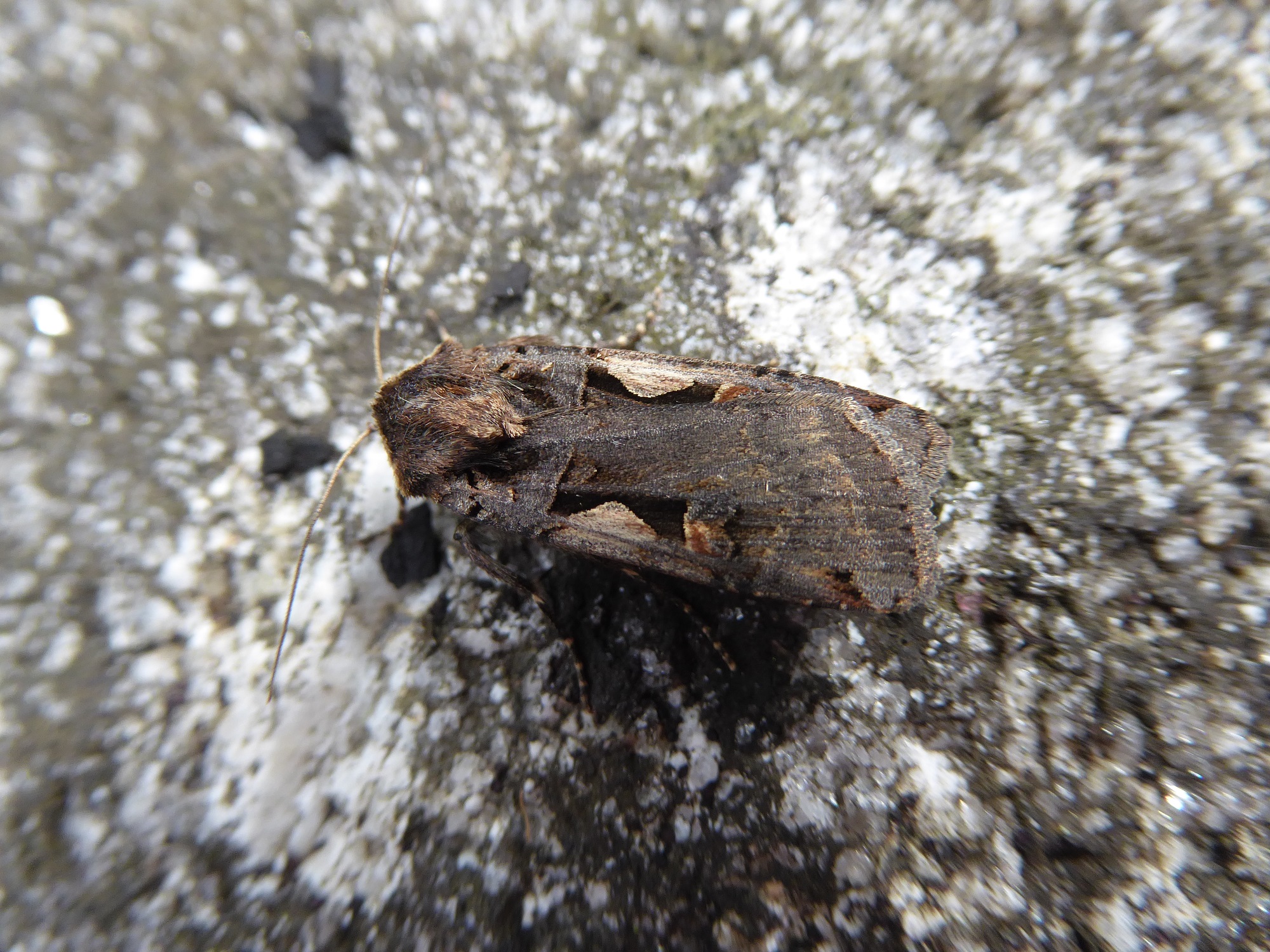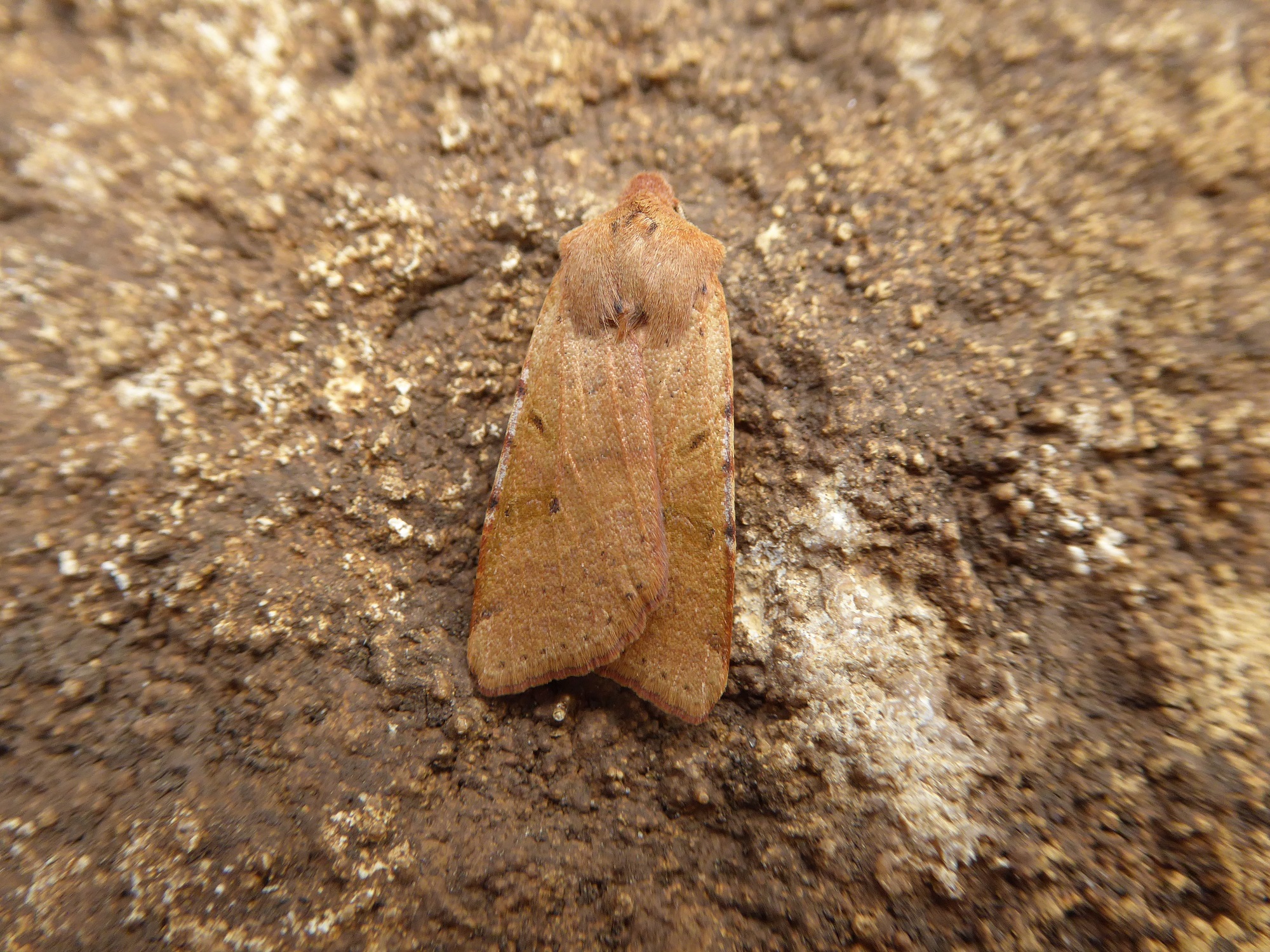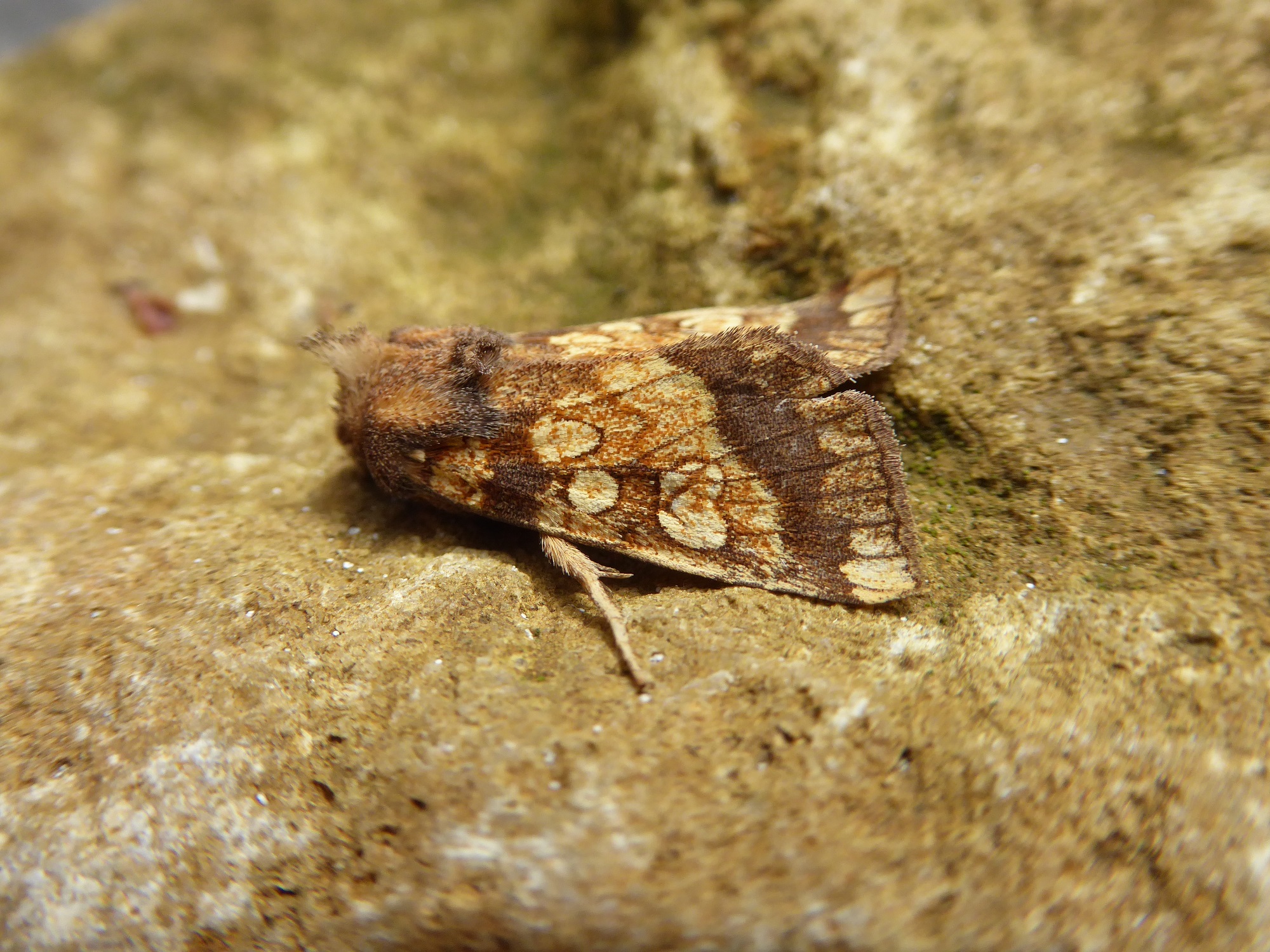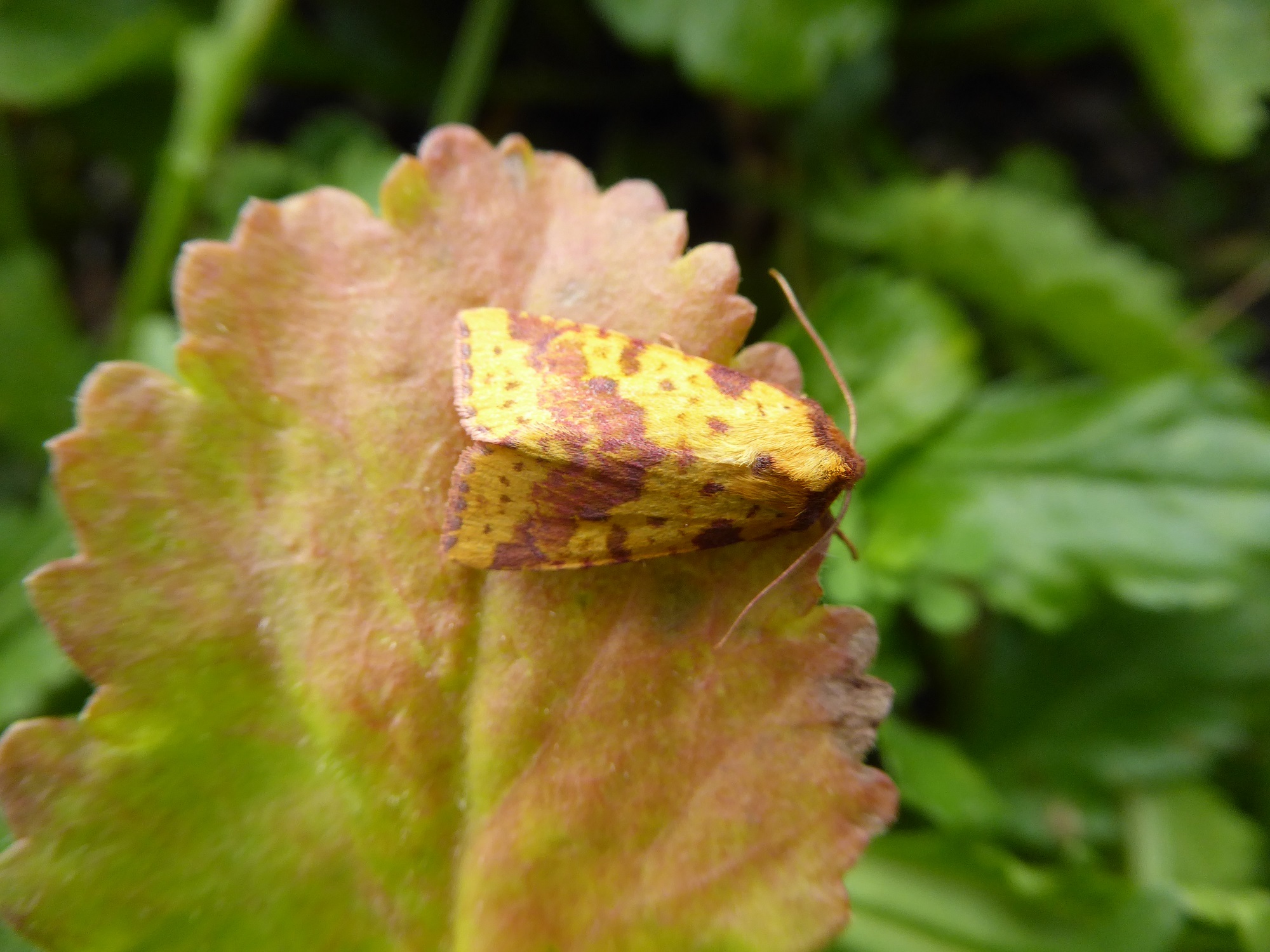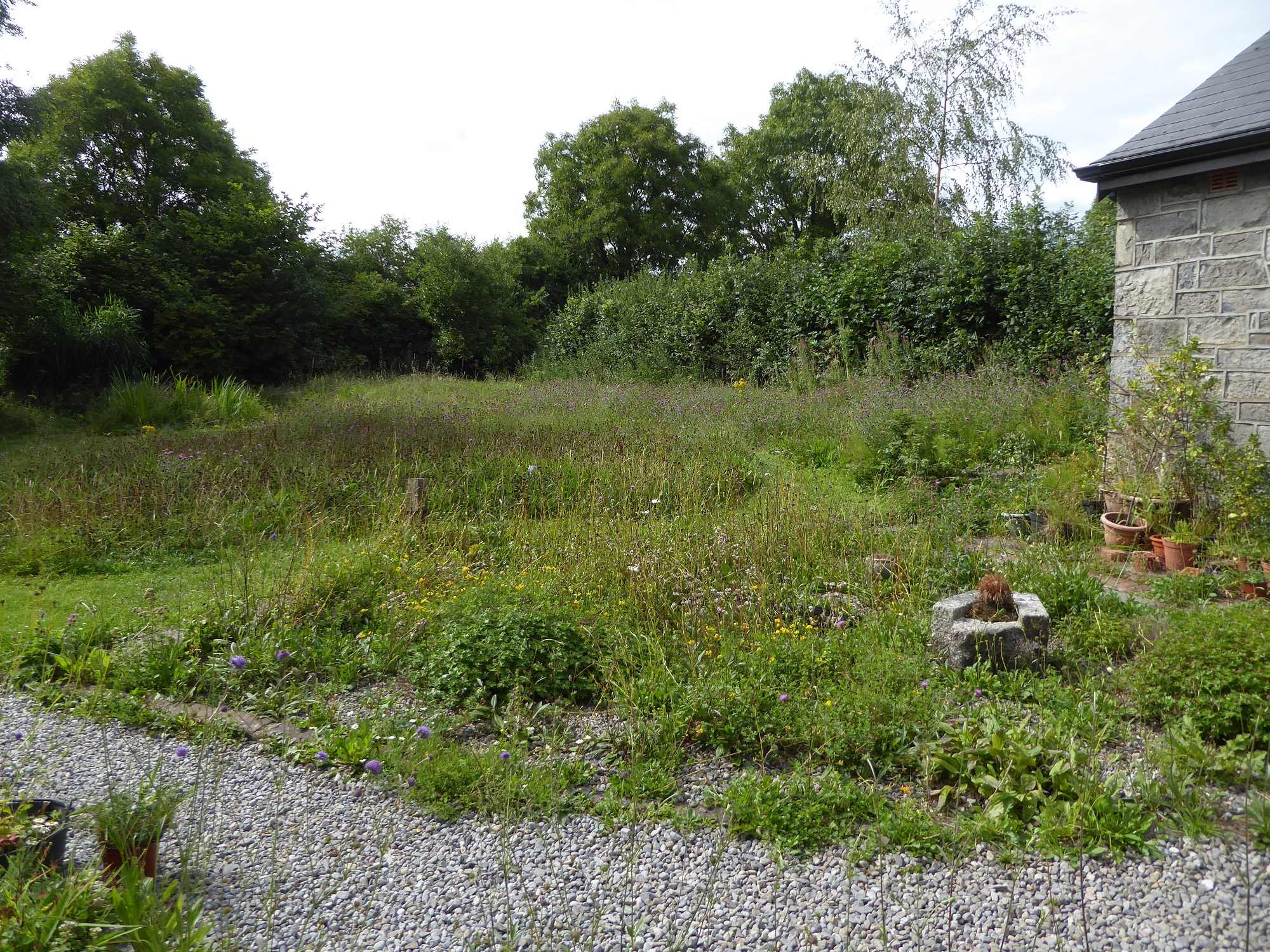The great summer weather of 2018 is over but its benefits, it appears, are still being observed. The Small Copper butterfly seems to have produced three generations and a fourth is still possible!
While butterflies being day-flying are easier to monitor, the results of light trapping for moths indicate that some moths are doing well. From the Garden Moth Scheme which covers all regions of Britain and the island of Ireland as one region comes news of very high figures for some species. One recorder had 356 and 131 Setaceous Hebrew Character moths in his two 15W Heath traps. While only 22 gardens in the Republic of Ireland are part of the Garden Moth Scheme these are trapped on over 90% (97% in May and June 2018) of the nights when trapping is to take place. This high level gives credibility to the results. For 9 out of the 12 regions in the British Isles, the Heart and Dart moth was the most numerous garden moth on average for May and June 2018. (Scotland and North-east England (Hebrew Character) and the Channel Islands (Diamond-back moth) are the exceptions).
We are now looking forward to seeing how the autumn species perform, and last Friday night saw my first record of the Beaded Chestnut, a moth that variable in appearance and often quite numerous during its flight period. The appearance of this moth is one of the signals that the autumnal moth species are about to appear. Other moths which occur now include the Setaceous Hebrew Character, a distinctively marked species whose larvae are found on Common Nettle and two more colourful species, Frosted Orange and Pink-barred Sallow. The Frosted Orange larva feeds on thistles leading one to expect it to be far more numerous than it is. In fact, it is recorded in low numbers, and cannot be assumed to appear in gardens every year. Its ginger peppering, yellow oval markings and brown band means it is attractive and unmistakable.
The Pink-barred Sallow is another pretty species. It shows a broad pink band across canary yellow forewings as its prominent marking with pink mottling above and below the band with the forewing edge pinked out in pink. While it occurs more frequently than the Frosted Orange, small numbers are the norm in my garden. Willows and poplars are the caterpillar’s food plants.
In good habitats, some night-flying moths can sometimes be seen during the day. These are usually observed in tall flower-rich grassland in warm, overcast weather. It provides a rare opportunity to see some species that otherwise can only be attracted to light traps. Like the butterflies, these moths will be found feeding on flowers, especially Common Knapweed, Common Ragwort and Devil’s-bit Scabious. The Silver Y moth flies during the day and night and is very fond of nectar, and will be seen with its typically swift buzzing flight at flowers, fluttering while taking nectar.
To encourage moths to breed in your garden, Grey Willow Salix cinerea and Downy Birch Betula pubescens, native oaks Quercus robur and Quercus petraea, Common Hazel Corylus avellana, Common Blackthorn Prunus spinosa, Common Hawthorn Crataegus monogyna and Common Nettle Urtica dioica are strongly recommended. Planting a species-rich hedge consisting of these tree species might be used to build a habitat in a smaller garden. A large garden allows room for some trees to develop without cutting and this may be more fruitful as some butterfly and moths need tall trees. A garden such as that shown below can be developed to resemble a woodland clearing, with trees, scrub and or hedging surrounding a grassy area containing native flowers. This offers food, shelter and warmth, creating ideal breeding conditions for many moths and butterflies. And a life-filled, exciting place for you, too.
Photographs © J. Harding 2018.
